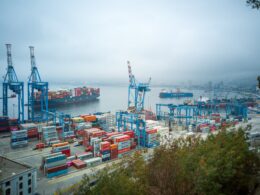Greg Kefer, Vice President, Corporate Marketing at Infor
For the better part of two decades, one of the holy grails for leaders has been the prospect of using technology to instantly locate the status of anything in the global supply chain. Billions of dollars have been invested in visibility technology that helps companies see and manage the entire end-to-end process. Progress has been made, but at the same time, the bar of success is a moving target, as other technology advances continue to change consumer expectations and the associated operational realities.
In a recent survey on supply chain digital transformation, 94 percent of respondents identified supply chain visibility as a key enabling technology. However, if you were to ask 50 professionals to define that term, you would likely get 32 different answers. The reason: Depending on the industry or job function, the value of “sight” is profound and all-encompassing. Practitioners need answers like: Where is my stuff? What are the material requirements in the plan? What is the status of production? What partner can help us in Indonesia? What is the status of the payment? What is the estimated ETA at the distribution center? These are just a few of the questions that supply chain visibility systems are expected to answer.
A supply chain visibility system must be capable of capturing information of any kind, from any partner, all in real-time. It must also connect related elements such as shipments, orders, invoices, production status, manifests, and payments – and enable entire partner networks to see and operate based on the same information. It must provide functional capabilities such as proactive alerts, reporting and execution. And, it must be capable of supporting anything and everything in the supply chain while also continuing to evolve with our changing world.
Consumers demand a resilient supply chain, even though few know what it is
Consumer’s expectations have changed significantly – and will only continue to evolve with time. Amazon’s impact on retail is well documented, but it does not end there. A supply chain that cannot support a model that delivers “any product, to any location, in 24 hours” is going to become problematic for any company that makes and ships goods. If one company can’t do it, there will be others that can, because the technology required to excel is getting better, faster and cheaper all the time. But one thing is for certain: supply chain visibility will be at the center of any operation that is built for speed and agility.
Over the past decade, there have been countless stories highlighting how supply chain visibility technology helped companies identify problems to avoid costly plant shutdowns or take advantage of peak revenue windows. In many cases, the ROI is in the tens of millions of dollars.
I recently spoke with the VP of logistics at Electrolux who described how a container ship fire at a small port in Indonesia nearly cost the company half of its holiday sales in Brazil. If it were not for the visibility solution, the company would not have known the impact of the disruption until it was too late.
Supply chain visibility systems will continue to mature with time
Existing investments in supply chain visibility systems will not go to waste. These have become foundational systems that link ERP with other systems and global partners. They do a lot of the heavy lifting of pushing orders, plans, shipments and commercial documents into the cloud for easy access and sharing.
The information that is currently embedded within most supply chain visibility systems today can also be infused with new technologies. Data collected via scanners and mobile devices can provide enhanced real-time updates to cargo location or temperature. Advanced machine learning tools can assess holistic situations to provide smart recommendations around how to address disruptions, optimize asset utilization, or identify pending problems.
Huge innovations in the last-mile delivery space present opportunities, as well as risk – and visibility will be key. Uber-like delivery networks are already disrupting the parcel delivery space, with drivers using their own mobile phones to transmit accurate location and milestone information back to the visibility system. These hyper-granular delivery details not only give consumers the information they want about their purchases, but also help insure the integrity of the shipper’s cargo to avoid theft or improper handling.
As autonomous vehicles come on line in the very near future, the industry will again be faced with a new opportunity to innovate in areas surrounding the new machines. Will they transmit more information? Can they change course due to an unexpected detour? Will goods be safe? We can expect visibility solutions to expand their scope and enable shippers and carriers to get better and faster with their supply chains.
The pace of innovation is increasing at such a rapid state, it is nearly impossible to predict what will happen next. As with any change, things may not be smooth to begin with, but in time, and with some trial and error, technology matures, more innovations happen, and the art of keeping billions of consumers happy becomes easier.













